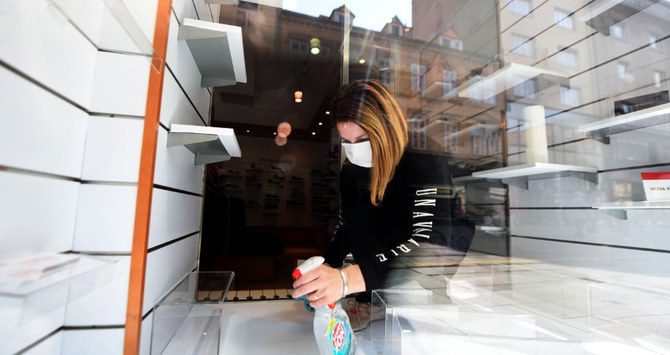
- ARAB NEWS
- 04 Jul 2025

During March and April, country by country has closed down its economy to flatten the curve of coronavirus infections and enable their health care systems to cope with the outbreak.
Never before has the world experienced economic scale-down at the same time in virtually all major countries and sectors.
We are used to dealing with national disasters, which are limited in geography and time allowing other countries and regions to provide help. Depending on their budgets, governments of affected countries can also respond to these one-time events.
There are wars and conflicts, which are regionally contained and even if they are widespread — such as in the case of the Second World War — not all economies are affected in the same way, allowing for reconstruction on a massive scale, as seen with the Marshall Plan.
Recessions emanating from “systemically relevant” institutions such as the 2008 financial crisis also have big ripple effects throughout the economy. There again, not all countries were affected to the same degree.
The coronavirus disease (COVID-19) is different, because all of the world’s major economies have been shut in at the same time, not allowing for sectors, countries or regions to act as a locomotive. US first-time jobless claims highlight the issue extremely well: They skyrocketed to 26.5 million within four weeks. Some economists expect unemployment to reach 20 percent, which would be double of what it was in the aftermath of the financial crisis.
Even as countries gradually reopen, their products have nowhere to go as long as the rest of the world is still under lockdown, especially if they have export-oriented economies such as China.
Another issue is that there is no clarity as to when economies will reopen and whether they will be forced to shut down again, due to potentially increased COVID-19 cases when measures are relaxed. A definitive answer to this conundrum will only emerge once the pharmaceutical industry has found and is able to produce at scale a vaccine or medicine reversing infections. Until then, we have no visibility over the shape and speed on any recovery.
The magnitude of the economic impact as well as the uncertainty of what to expect is unprecedented in recent history. Global monetary and fiscal stimuli have surpassed $8 trillion, which was welcome, but will in all probability not be enough. Governments have had no choice but to pump money into the system to prevent their economies, companies and especially households from falling off a cliff. We will be left with a hitherto unseen debt burden in a world that was already overextended, and this at a time where the tax base is shrinking to unprecedented lows at rapid speed.
All of the above make it difficult to gauge how economies and companies will perform going forward and what metrics to use.
As the economy is changing due to these unprecedented times, we also have to change the way we evaluate and forecast economic activity at all level
Cornelia Meyer
GDP numbers and forecasts are tricky. First quarter numbers for this year are dismal, but only reflect the early beginnings of the lockdown. Forecasts are all but impossible because we have no visibility about the duration of the crisis and what the world will look like once we have reached the other side. Most sectors, such as manufacturing, travel, leisure, real estate, energy, will have undergone enormous change. Supply chains will no longer look the same. The state will emerge as a major stakeholder in economic activity. This even in traditional laissez-faire, free market economies, because the government will have bailed out enterprises or guaranteed loans to millions of companies in all sectors.
This turns the purchasing manufacturers indexes into one of the best temperature gauges in the short term. Their monthly intervals allow us to get a picture of how manufacturing and services have fared most recently. They also highlight trends.
As for companies, guidance seems to be a thing of the past. As the reporting season goes on, management after management admits that it does not have enough visibility of things to come to issue guidance. In the old world, blue chip stocks, which yielded good dividends, played the role, traditionally assumed by bonds. In a world where interest rates were low, he who could deliver yield was king.
This will remain true to a certain extent, but there is pressure on many companies to lower their dividend payments and share buy-backs, especially if they received government bailouts or their profits plunged.
In the meantime, the way investors are looking at government bonds has changed considerably. The criteria have turned from return on investment to return of investment. This applies particularly to US treasury bills, because investors expect the US to make good on its obligations for decades to come. We have seen longer-duration assets, such as 30-year treasury bonds, become more popular, because they still generate yield compared to 10-year ones, where the yield hovers slightly above zero. Government bonds of emerging markets and Europe’s southern rim have risen as a reflection of their declining creditworthiness.
In other words, as the economy is changing due to these unprecedented times, we also have to change the way we evaluate and forecast economic activity at all levels. We have to rethink metrics and priorities for countries, regions, companies and indeed the world.
• Cornelia Meyer is a business consultant, macroeconomist and energy expert.
Twitter: @MeyerResources